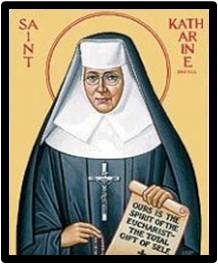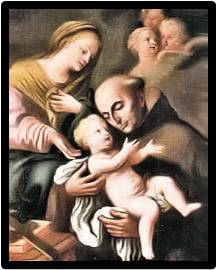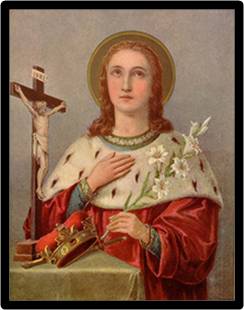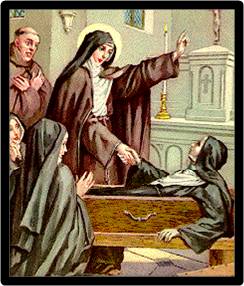MARCH 3 - ST. KATHARINE DREXEL

Katharine was born in Philadelphia, Pennsylvania, USA, to Francis Anthony and Hanna Langstroth Drexel. Katharine’s mother Hanna died when she was just a month old. Two years later, her father who was a rich industrialist and patron of railroads married a wonderful woman named Emma.
Emma was a loving mother to Elizabeth and Katharine. She then had another daughter Louise and the girls had a happy childhood together. Although their family was wealthy, they were taught to love their neighbors and be especially concerned about the poor.
Their wealth was used for the benefit of others to show their love for God. Her parents even opened their home to the poor several days a week. Elizabeth and Katharine taught at the Sunday School that Emma began for the children of employees and their neighbors.
Later Elizabeth started a Pennsylvania trade school for orphans and her younger sister Louise started a liberal arts and vocational school for poor blacks in Virginia.
Katharine nursed her mother who suffered from cancer for three years before she died in 1883. After her mother’s death, Katharine set out and looked for ways to make herself useful. She was a very active Catholic and generous with her time and her money. She realized that the Church had many needs.
She turned her energies and her fortune to the poor and the forgotten. Her work for Jesus was among the African American and Native American people. She visited the Dakotas, met the Sioux chief and began her systematic aid to the Indian (Red Indian) missions, spending millions of the family fortunes. She began to build schools, supply food and clothing, furnishings and salaries for teachers. She was also able to find priests to serve the spiritual needs of the people
In 1891, Katharine became a nun and took the name of Sister Mary Katharine, she then began a new religious community of missionaries in Santa Fe, New Mexico. They were called the Sisters of the Blessed Sacrament for Indians and Colored (now known simply as the Sisters of the Blessed Sacrament).
She was later known as Mother Katharine. The sisters of her order center their life around Jesus in the Eucharist. She and her sisters started schools, convents and missionary churches. In 1925, they established Xavier University in New Orleans. During her long, fruitful lifetime, Mother Katharine she and her sisters accomplished many wonderful works for the poor.
She believed that she found Jesus truly present in the Eucharist. So, too, she found him in the African and Native Americans whom she lovingly served. Mother Katharine died on March 3, 1955, at the age of ninety-seven.



